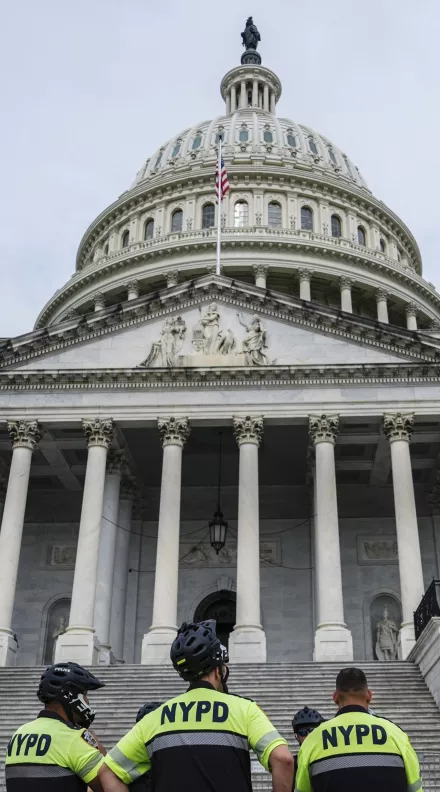
About
The Homeland Security Project focuses on resiliency, border security, and the Department of Homeland Security’s efforts to address strategic questions regarding a massive and diverse policy enterprise that touches the life of every American.

Learning to Live in an Age of Disasters
In her latest book, The Devil Never Sleeps, Juliette Kayyem lays the groundwork for a new “fail safely” approach to dealing with disasters.
“Most disaster management focuses on the period before the disaster, where prevention and protection efforts are meant to avert a crisis,” says Kayyem, Faculty Director of the Belfer Center’s Homeland Security Project. “But despite those best efforts, the boom will arrive.”
The Latest
In a new documentary, Juliette Kayyem and PBS Science Correspondent Miles O’Brien embark on a multifaceted journey through the aftermath of the death, destruction, and devastated communities tornadoes leave behind.
American Tornadoes: Minutes to Survive, Years to Rebuild
In the News
Timely, topical analysis on key homeland issues
Global Crisis and Resilience Forum
The Global Crisis and Resilience Forum is a continuing publication series led by Juliette Kayyem, Faculty Chair of the Belfer Center’s Homeland Security Program.
-
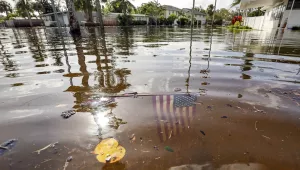 AP Photo/Mike CarlsonArticle
AP Photo/Mike CarlsonArticleBounce Back Better: Four Keys to Disaster Resilience in U.S. Communities
by Mysore, Mihir , Tim Ward, Tom Dohrmann and David Bibo -
 Associated PressPolicy Briefs
Associated PressPolicy BriefsHow Multimodal AI Could Retool Global Crisis Response
by Ben Ellencweig, Jessica Lamb, Jon Spaner, Mihir Mysore and Jesse Salazar -
 U.S. Army National GuardReports & Papers
U.S. Army National GuardReports & PapersEvolving The Emergency Management Enterprise to Meet a New Operational Reality: A State Perspective
June 2023 by Nate Bruggeman, Kevin Klein and Shawn Talmadge -
Reports & Papers
Evolving The Emergency Management Enterprise to Meet a New Operational Reality: A Federal Perspective
June 2023 by Nate Bruggeman, Pete Gaynor and Rich Serino -
 Getty ImagesReports & Papers
Getty ImagesReports & PapersClimate Change Requires New Approaches to Disaster Planning and Response
June 2023 by David J. Hayes -
Reports & Papers
Navigating Poly-crisis: The New Reality for Crisis Management in the United States
June 2023 by Luke Beckman
Homeland Security Paper Series
Led by Juliette Kayyem.
-
-
 U.S. Customs and Border Protection/Josh DenmarkReports & Papers
U.S. Customs and Border Protection/Josh DenmarkReports & PapersMigration at the U.S.-Mexico Border: A Challenge Decades in the Making
by Alan Bersin, Nate Bruggeman and Ben Rohrbaugh -
 Getty ImagesReports & Papers
Getty ImagesReports & PapersReach, Choice, and Transparency: Governing the Internet in the 21st Century
May 2023 by Steve Johnson -
 AP Photo/Mark SchiefelbeinReports & Papers
AP Photo/Mark SchiefelbeinReports & PapersCombatting Forced Labor in Global Supply Chains
January 2023 by Sarah Bishop, Tom Plotkin and Emanuel Ghebregergis -
-
Reports & Papers
Disrupting Transnational Criminal Activity: A Law Enforcement Strategy for Homeland Security
by Alan Bersin and Chappell Lawson -
Reports & Papers
Improving Big Data Integration and Building a Data Culture for U.S. Border Security
by Stephen Coulthart and Ryan Riccucci -
Reports & Papers
Closing Critical Gaps that Hinder Homeland Security Technology Innovation
by Nate Bruggeman and Ben Rohrbaugh -
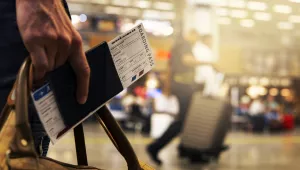 Image by Joshua Woroniecki, PixabayReports & Papers
Image by Joshua Woroniecki, PixabayReports & PapersLessons Learned: Why the United States Needs a Counter-Pandemic Border Strategy
by Robert Bonner and Gillian Horton -
 Image by PIRO4D from PixabayReports & Papers
Image by PIRO4D from PixabayReports & PapersCOVID-19 and the Preexisting Weaknesses and Tensions Within Our Emergency Management Regime
by Timothy Perry -
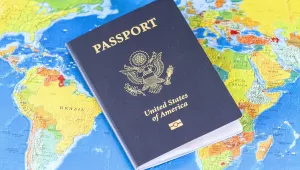 cytis/Pixabay
cytis/Pixabay -
Reports & Papers
Beyond CVE: Evolving U.S. Countering Violent Extremism Policy to Prevent the Growing Threat of Domestic Terrorism
by Alexander Guittard -
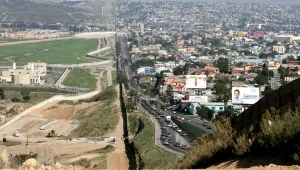 WikiImages/PixabayReports & Papers
WikiImages/PixabayReports & PapersThe New Reality of Migrant Flows at the U.S. Southwest Border
by Alan Bersin and Nate Bruggeman -
 Image by TeroVesalainen from Pixabay
Image by TeroVesalainen from Pixabay -
-
 AP Photo/Eduardo Verdugo
AP Photo/Eduardo Verdugo
Our Experts
Exploring the challenges and choices around protecting the American homeland










